The Heart of Islam and Culture on the Kenyan Coast
The Maulidi Festival, often called the Lamu Maulidi Festival, is one of Kenya’s most vibrant and spiritually significant events. Held annually in Lamu Old Town, a UNESCO World Heritage Site, the festival commemorates the birth of Prophet Muhammad during the holy month of Rabi’ al-Awwal.
What makes the Maulidi Festival so unique is its combination of religious devotion and Swahili cultural heritage. For centuries, it has attracted pilgrims, scholars, and tourists from East Africa, the Middle East, and across the globe. It is both a spiritual pilgrimage and a cultural showcase that highlights Lamu’s enduring place as a cradle of Islamic learning and Swahili tradition.
What Is the Maulidi Festival?
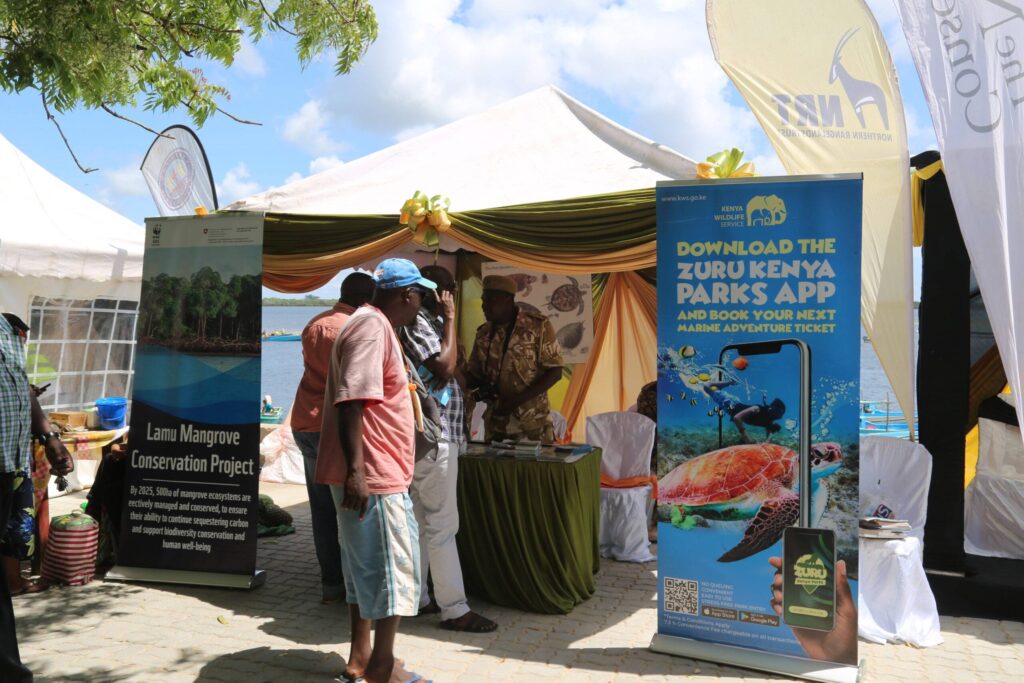
The Maulidi Festival is a celebration of the Prophet Muhammad’s birth (Mawlid al-Nabi), but in Lamu it has taken on a distinctive character. Unlike other parts of the world where Mawlid may be limited to prayers and recitations, Lamu has woven in its rich Swahili traditions.
For Muslims, the Prophet’s birthday is a time to reflect on his teachings of peace, compassion, and unity. For the Swahili people of Lamu, it is also an opportunity to bring the community together through cultural performances, processions, and feasts. This blending of sacred and cultural elements has made the Maulidi Festival one of the most anticipated events on Kenya’s calendar.
History and Origins of the Maulidi Festival
The roots of the Maulidi Festival in Lamu date back to 1866, when Habib Swaleh bin Alwi al-Hadad, a Yemeni Islamic scholar and reformer, institutionalized the celebrations at the Riyadha Mosque. Habib Swaleh emphasized education, religious devotion, and cultural unity, laying the foundation for what has become a month-long festival.
The Riyadha Mosque remains at the center of the festival today, with its leaders continuing Habib Swaleh’s legacy by guiding prayers, lectures, and rituals. Over time, the festival grew in scale, incorporating sporting events, artistic competitions, and cultural exhibitions. By the 1990s, the National Museums of Kenya became a co-sponsor, helping preserve its historical and cultural significance.
When and Where Is the Maulidi Festival Held?
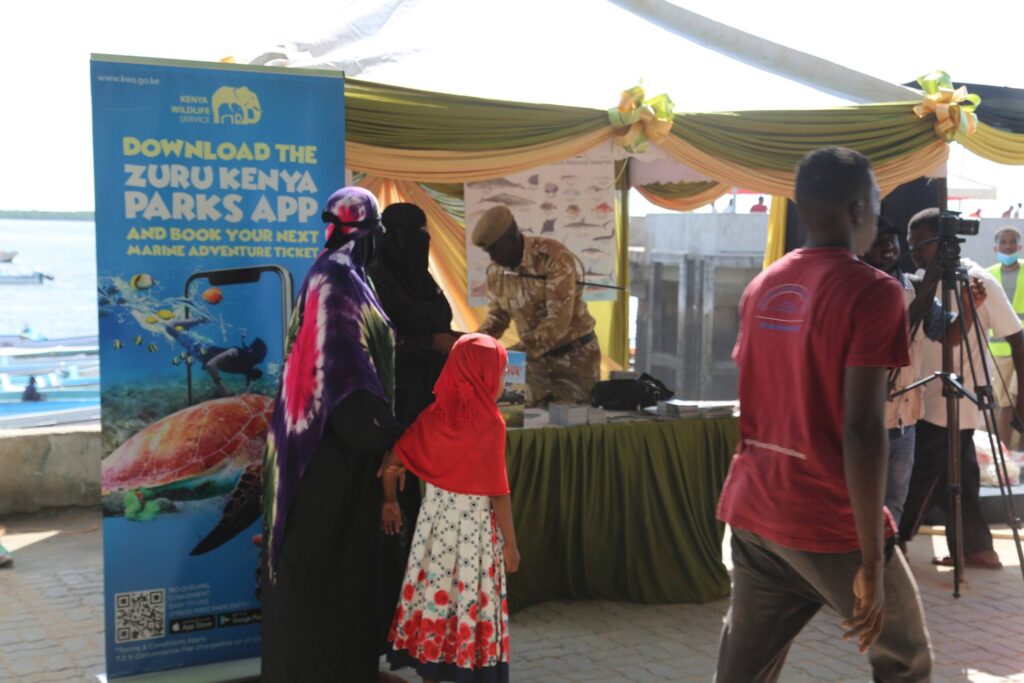
The Maulidi Festival is observed during the third month of the Islamic calendar, Rabi’ al-Awwal. While the entire month is filled with spiritual activities, the final four days form the peak of the celebrations.
The festivities take place in Lamu Old Town, a car-free island town famous for its coral-stone houses, carved wooden doors, and winding alleys. This historic setting provides a unique backdrop for both the religious and cultural elements of the festival.
Religious Significance and Rituals
The Maulidi Festival is deeply rooted in Islamic devotion. Its religious highlights include:
- Quranic Recitations – Verses are recited throughout mosques and homes, filling the town with sacred sounds.
- Maulid Poetry – Works such as Sharaful-Anām, Barzanji, Simt al-Durar, and Maulid ya Dibei are performed, narrating the life and virtues of the Prophet.
- Lectures and Sermons – Prominent clerics deliver teachings on morality, unity, and the Prophet’s example.
- Pilgrimage to Riyadha Mosque – Thousands of pilgrims gather for prayers and blessings, reinforcing the town’s reputation as a spiritual hub.
These rituals are not only expressions of faith but also opportunities for intergenerational transmission of Islamic knowledge and tradition.
Festive Events and Cultural Attractions
What makes the Maulidi Festival truly special is the way it integrates Swahili cultural elements with religious devotion.
Donkey Races
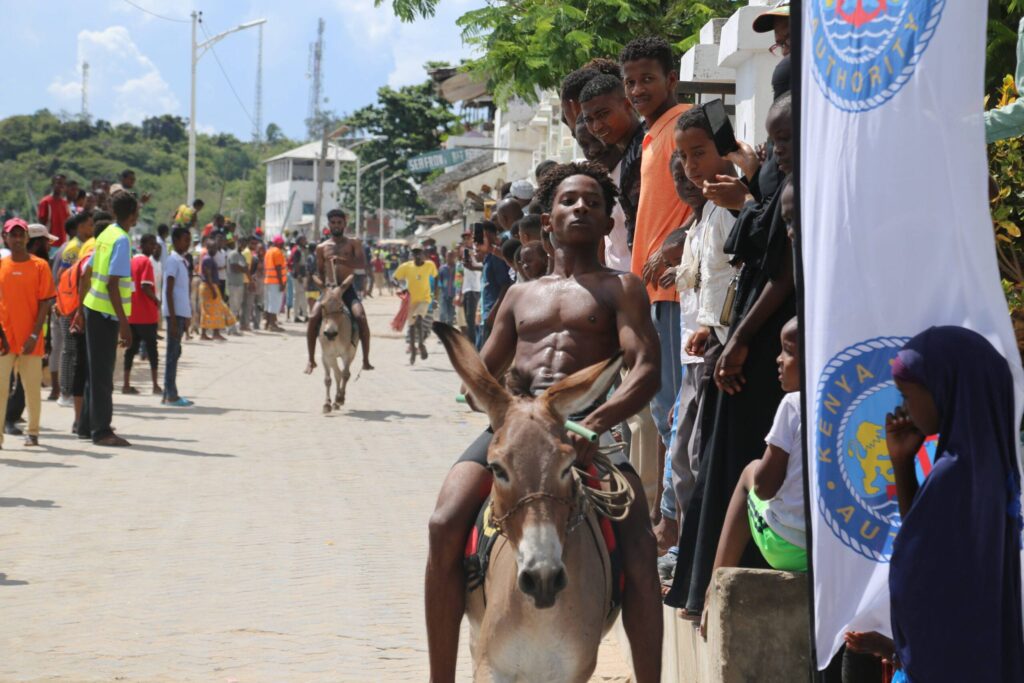
Donkeys are Lamu’s primary mode of transport, and during the festival, they become central to thrilling races. Riders compete through narrow sandy streets, cheered on by laughing spectators.
Dhow Races and Swimming Competitions
Traditional wooden dhows with lateen sails dominate the harbor during the dhow races. These events pay homage to Lamu’s maritime heritage. Swimming contests in the ocean also draw huge crowds, showcasing local talent and resilience.
Art, Calligraphy, and Poetry
Cultural competitions highlight Swahili artistry—henna designs, Arabic calligraphy, and Swahili poetry bring vibrancy to the celebrations. These events help preserve cultural traditions that might otherwise fade.
The Zeffe Parade
Perhaps the most iconic cultural element, the zeffe parade sees men and boys join hands, dancing and chanting through the alleys of Old Town. The parade culminates in prayers at Riyadha Mosque, symbolizing unity, devotion, and joy.
Food and Festive Delights
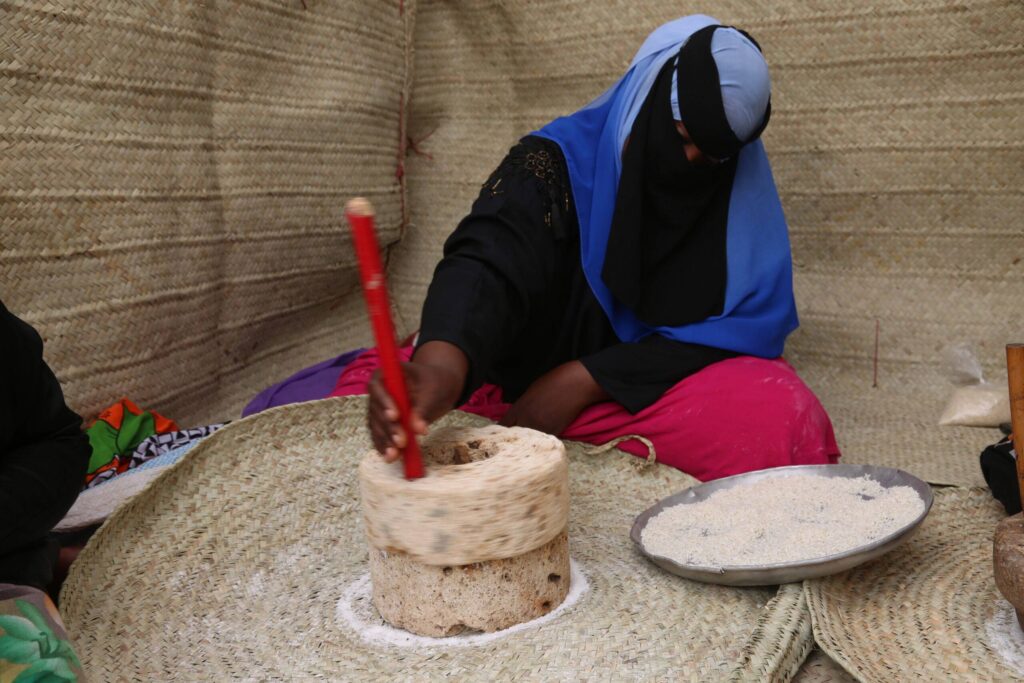
No festival is complete without food, and the Maulidi Festival is a culinary paradise. Traditional Swahili dishes dominate, including:
- Pilau and Biriani – Fragrant spiced rice dishes cooked with meat or fish.
- Mishkaki – Skewered and grilled meat.
- Mandazi and Mahamri – Sweet fried bread served with spiced tea.
- Fresh seafood – From prawns to snapper, reflecting Lamu’s coastal bounty.
Food stalls line the festival streets, creating a lively marketplace where visitors can indulge in authentic Swahili flavors.
Pilgrims, Tourists, and Cultural Exchange
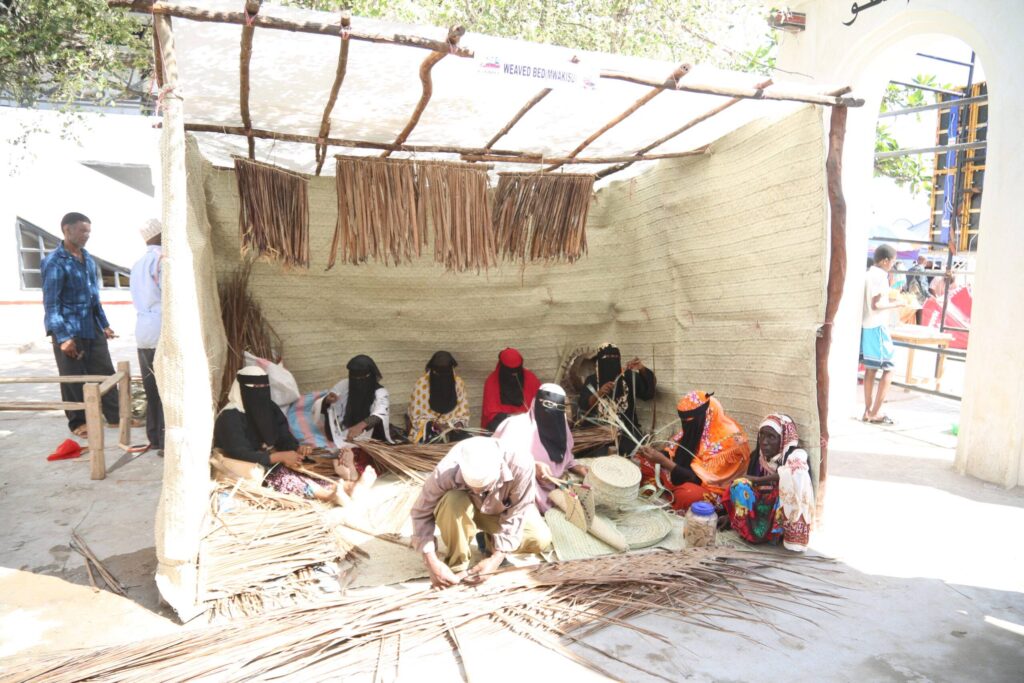
The Maulidi Festival is not only for locals—it attracts pilgrims and visitors from East Africa, the Middle East, and beyond. Thousands travel to Lamu for the chance to celebrate in one of Islam’s oldest strongholds on the African coast.
For tourists, the festival provides a unique opportunity to witness Islamic traditions and Swahili culture in harmony. The mix of religious observance, cultural parades, and coastal hospitality leaves a lasting impression. The festival also boosts cultural tourism, supporting hotels, restaurants, and local artisans.
Challenges and Debates
Like many religious festivals, the Maulidi Festival has not been without debate. Some Islamic scholars question the inclusion of cultural activities, seeing them as innovations (bidʿa). However, for the majority, the festival is cherished as a living tradition that strengthens faith and community ties.
Logistical challenges also arise: managing large crowds, providing adequate facilities, and preserving Lamu’s delicate heritage town. Yet, year after year, the festival endures, proving its resilience and importance.
Why the Maulidi Festival Matters Today
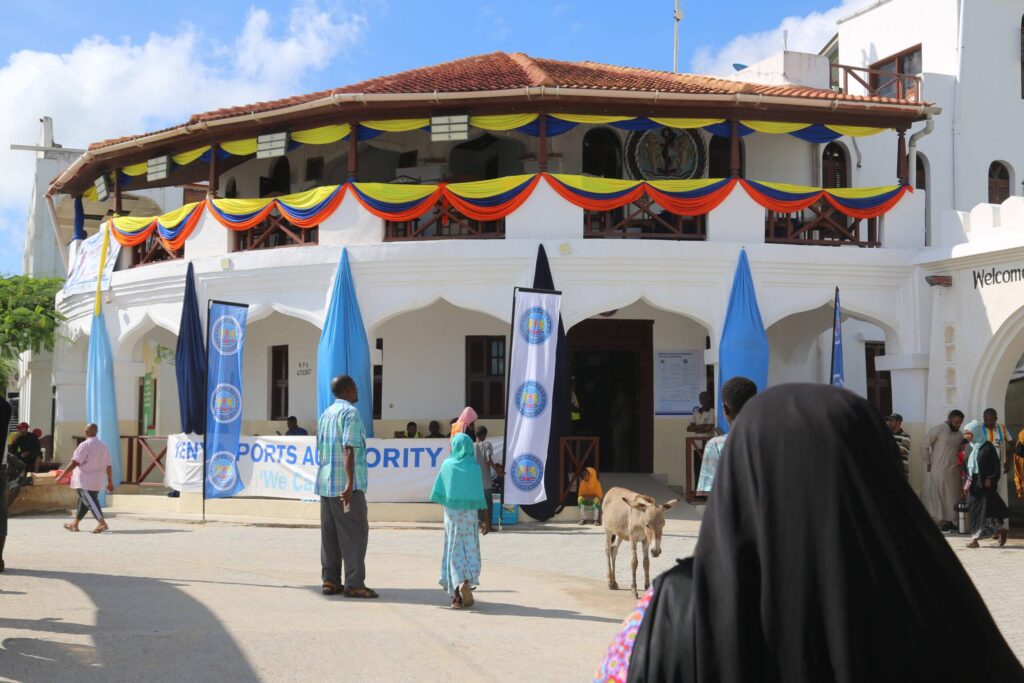
In today’s rapidly changing world, the Maulidi Festival plays several vital roles:
- Cultural Preservation – Keeps Swahili traditions alive.
- Spiritual Renewal – Strengthens faith and devotion among participants.
- Community Unity – Brings together diverse groups for shared celebration.
- Tourism and Economy – Boosts Lamu’s cultural tourism and local businesses.
Ultimately, the festival is a reminder that heritage, faith, and community can thrive together.
Also read:Exploring the Best Cultural Festivals in Kenya
Wrap-Up
The Maulidi Festival is more than just a commemoration of Prophet Muhammad’s birth—it is a celebration of faith, culture, and identity. From the Quranic recitations at Riyadha Mosque to the exhilarating dhow races and the joyous zeffe parade, the festival encapsulates the spirit of the Swahili coast.
By blending devotion with tradition, the festival has become a cultural treasure not just for Kenya but for the world. For pilgrims, it is a spiritual journey; for tourists, a cultural revelation. Above all, the Maulidi Festival is a living testament to the power of heritage in uniting people across generations and borders.
10 Frequently Asked Questions (FAQs)
- What is the Maulidi Festival?
The Maulidi Festival is an annual Islamic celebration in Lamu, Kenya, commemorating the Prophet Muhammad’s birth with prayers, parades, and cultural activities. - Where is the Maulidi Festival held?
It takes place in Lamu Old Town, a UNESCO World Heritage Site on the Kenyan coast. - When does the festival occur?
It is celebrated during Rabi’ al-Awwal, the third month of the Islamic calendar, with a climax over four days. - Who founded the festival?
The festival was institutionalized in 1866 by Habib Swaleh, a Yemeni scholar who established Riyadha Mosque. - What religious activities take place?
Quran recitations, Maulid poetry, lectures, and processions are central to the festival. - What cultural events are included?
Donkey races, dhow sailing competitions, henna art, poetry contests, and the famous zeffe parade. - Is the festival only for Muslims?
While rooted in Islam, the festival welcomes visitors of all backgrounds to experience Swahili culture. - How many people attend?
Thousands of pilgrims and tourists from East Africa, the Middle East, and beyond attend annually. - What food is served?
Swahili dishes like pilau, biriani, mishkaki, mandazi, and fresh seafood dominate the festival. - Why is the Maulidi Festival important?It preserves Swahili heritage, strengthens faith, unites communities, and boosts cultural tourism in Lamu.


